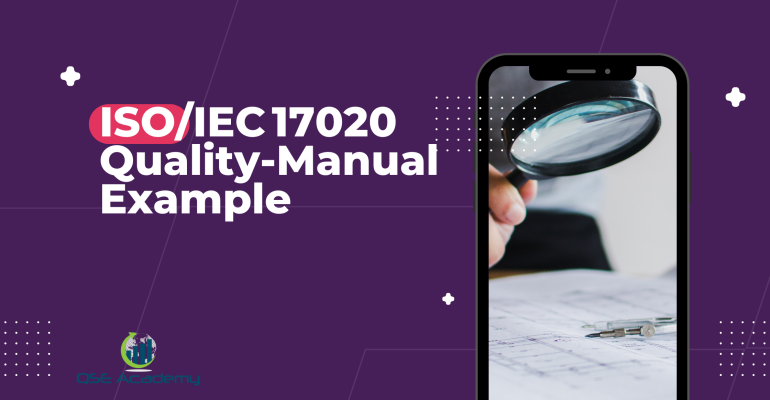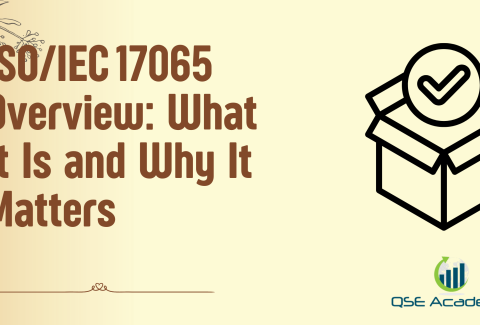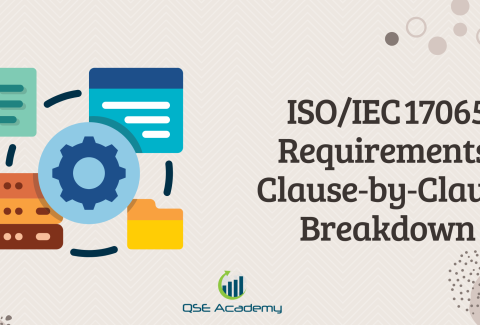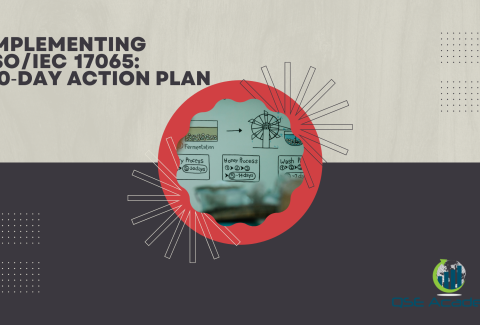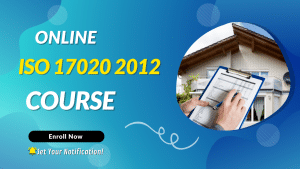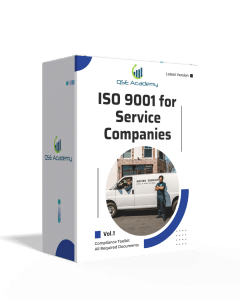ISO/IEC 17020 Quality‑Manual Example
Last Updated on October 22, 2025 by Hafsa J.
What Is an ISO/IEC 17020 Quality Manual and Why It Matters
Let’s be real—most inspection bodies know they need a Quality Manual for ISO/IEC 17020 accreditation, but few truly understand what it’s supposed to do. I’ve seen organizations treat it as a formality: a thick binder full of copied text from ISO 9001, sitting untouched on a shelf. Then the assessor shows up and asks one simple question—“Can you show me how your Quality Manual reflects your actual inspection process?”—and silence follows.
In my experience, that silence is where the problem lies. Your ISO/IEC 17020 Quality Manual isn’t just another document—it’s the story of how your inspection body ensures impartiality, competence, and consistency. It’s a top-level roadmap that connects all the moving parts of your management system: policies, procedures, records, and people.
Here’s what I’ve noticed after years of preparing inspection bodies for accreditation: when a Quality Manual is clear, concise, and genuinely used, it becomes your strongest defense during audits. It tells assessors, “We don’t just follow the standard—we live it.”
This article will break down exactly what an ISO/IEC 17020 Quality Manual must include, how it aligns with each clause of the standard, and how to structure it so it’s both compliant and practical. Whether you’re building your first manual or revising an outdated one, you’ll learn what works, what doesn’t, and how to make your documentation tell your story with confidence.
Now that we’ve clarified what the Quality Manual really is, let’s dig into what the ISO/IEC 17020 standard actually requires from it—and why that structure can make or break your accreditation readiness.
ISO/IEC 17020 Quality-Manual Requirements Explained
Here’s what I’ve seen again and again—most inspection bodies either overcomplicate their Quality Manual or oversimplify it. They either turn it into a 100-page monster filled with copied text from the standard, or a five-page summary that says almost nothing.
Neither works.
The ISO/IEC 17020 Quality-Manual has one purpose: to describe your management system—how your organization ensures impartiality, consistency, and technical competence in inspections. It doesn’t need to restate every clause; it needs to show how you meet them in your daily operations.
1. What the Standard Really Requires
Under Clause 8 – Management System Requirements, ISO/IEC 17020 asks inspection bodies to establish and maintain a documented management system.
That system must include:
-
A Quality Policy and objectives.
-
Procedures that support consistency and control.
-
A Quality Manual or equivalent documentation describing how requirements are met.
If you follow Option A, you must have a standalone Quality Manual.
If you follow Option B (integrating with ISO 9001), your Quality Manual can be part of your ISO 9001 system—but it still needs to address all ISO/IEC 17020 clauses explicitly.
2. Difference Between a Quality Manual, Procedures, and Records
Let’s make this simple:
-
The Quality Manual explains what your system looks like.
-
The Procedures explain how each process is carried out.
-
The Records provide evidence that the procedures are being followed.
In other words, your manual is the map, procedures are the routes, and records are the travel logs.
Pro Tip: A good Quality Manual references procedures and forms by document code or hyperlink. That makes it easy for assessors to trace compliance without digging through folders.
3. Keep It Realistic and Focused
In my experience, the most effective manuals are written in plain language and reflect the real work environment—not idealized textbook processes. Use your organization’s terms, roles, and flow.
Don’t write, “The Quality Manager shall ensure inspection records are controlled per procedure QP-07” if in practice your Technical Manager does it.
Common Pitfall: Copying ISO 9001 text word-for-word. ISO/IEC 17020 is built around impartiality and inspection consistency, not product conformity—so your manual must address risk of bias, confidentiality, and independence directly.
ISO/IEC 17020 Quality-Manual Structure and Typical Sections
Here’s what I tell every client starting their accreditation journey: your Quality Manual is not a rewritten version of the standard—it’s your organization’s story told through the structure of ISO/IEC 17020. It should show how your inspection body works, who’s responsible for what, and how you meet every requirement in a clear, logical way.
Think of it like an executive blueprint of your management system. Assessors should be able to open it and instantly understand how your organization maintains impartiality, manages competence, and controls quality across all inspection activities.
1. Recommended Structure of an ISO/IEC 17020 Quality Manual
| Section Title | Purpose / Description | Linked Clauses |
|---|---|---|
| 1. Introduction & Scope | Defines the legal identity of the inspection body, the scope of inspection activities, and exclusions if any. | 1.2, 4.1 |
| 2. References & Definitions | Lists applicable standards (ISO/IEC 17020:2012, ILAC P15, etc.) and key terms used in the manual. | 3.1 |
| 3. Organizational Structure & Responsibilities | Describes hierarchy, reporting lines, and roles for key personnel (e.g., Quality Manager, Technical Manager). | 5.1 |
| 4. Impartiality and Confidentiality Policy | Demonstrates commitment to independence and information protection. | 4.1–4.2 |
| 5. Management System Overview | Explains how processes interact and how the management system supports consistent inspections. | 8.1–8.2 |
| 6. Document and Record Control | Defines how documents are created, approved, revised, distributed, and stored. | 8.3 |
| 7. Inspection Activities and Method Control | Describes the process flow of inspection planning, performance, and reporting. | 6.1–7.4 |
| 8. Internal Audit and Management Review | Explains how performance is monitored and improved through regular reviews. | 8.4–8.5 |
| 9. Corrective and Improvement Actions | Shows how nonconformities are addressed, root causes analyzed, and improvements implemented. | 8.7–8.8 |
| 10. Annexes or Appendices | Includes supporting charts, process maps, or document registers. | — |
2. Practical Tips for Structuring the Manual
-
Use the same numbering as ISO/IEC 17020 clauses. It helps auditors cross-reference easily.
-
Keep each section short—one to two pages is ideal. Link to controlled procedures for the details.
-
Include version control on every page (revision number, approval date, approver).
-
Show your process flow visually. A single diagram of how inspections move from client request → execution → reporting can make a strong first impression.
Pro Tip: The best manuals I’ve seen use a “clause-to-procedure matrix” at the end. It lists each ISO/IEC 17020 clause and points to the relevant section or procedure number. Assessors love it—it saves them time and shows you understand traceability.
Common Pitfall: Trying to make the manual overly descriptive. The manual should summarize your system, not duplicate every procedure. If your team struggles to maintain it, it’s too long.
How to Write an ISO/IEC 17020 Quality-Manual Step-by-Step
Here’s what I’ve noticed after helping many inspection bodies through accreditation: most people start by opening a blank document and copying the ISO/IEC 17020 clauses word for word. It feels safe—but it doesn’t work. Assessors don’t want to read the standard again; they want to see how your organization actually applies it.
Writing your Quality Manual isn’t about filling pages—it’s about translating your system into a clear, usable, and auditable document. Let’s walk through the process the right way.
1. Define Your Scope Clearly
Start by explaining what your inspection body actually does.
Include:
-
Inspection types and sectors (e.g., vehicle inspections, structural safety, food hygiene, etc.).
-
Limitations and exclusions—be honest about what you don’t cover.
-
Legal identity and accreditation field.
Pro Tip: Use wording from your official accreditation scope—it ensures alignment with your future certificate and avoids audit confusion.
2. Map Your Core Processes
Identify every main process involved in your inspection activities—such as request handling, planning, performing inspections, report issuance, and review.
Then, show how they interact.
A simple flowchart works wonders here: it gives assessors instant clarity on how your system functions.
Common Pitfall: Listing processes but not showing how they connect. The manual should tell a story, not a checklist.
3. Integrate Clause References
Structure the manual around the ISO/IEC 17020 clause numbering (Clauses 4 to 8).
Under each clause, briefly describe how your organization complies—then link to the relevant documented procedure (e.g., “See Procedure QP-07: Internal Audit”).
Pro Tip: Hyperlink every reference if your manual is digital—it shows digital control and makes navigation easy during remote audits.
4. Assign Clear Responsibilities
Each section should specify who’s responsible for implementation, review, and approval.
Example:
-
The Technical Manager ensures all inspection methods are current and controlled.
-
The Quality Manager maintains document control and oversees internal audits.
Pro Tip: Add a small Responsibility Matrix in the annex—it’s an easy reference for both staff and auditors.
5. Control Your Document Versions
Every Quality Manual needs proper document control. Include:
-
A header or footer showing version number, issue date, and approver.
-
A revision table listing all changes and reasons.
-
An approval signature (electronic or handwritten) from top management.
Common Pitfall: Forgetting to show document approval. Assessors need visible evidence that management endorses the system.
6. Keep It Practical and Aligned with Reality
Your manual should describe what you actually do, not what you wish you did.
If your inspection reports are reviewed by a senior inspector before release—say it exactly that way.
Auditors quickly spot generic text that doesn’t match practice.
Pro Tip: Before finalizing, give your draft to someone who isn’t part of your ISO team and ask, “Can you understand how our inspection system works just by reading this?”
If the answer is yes—you’ve written a real Quality Manual, not a bureaucratic one.
ISO/IEC 17020 Quality-Manual Example (Template Overview)
Let’s make this practical. You’ve read about what to include and how to structure it—now let’s see how a real ISO/IEC 17020 Quality-Manual might look when it all comes together.
When I prepare manuals for clients, I always follow one golden rule: simplicity equals usability. A well-designed manual should be short enough to read in one sitting but detailed enough that an assessor can trace every ISO 17020 requirement directly to your system.
Below is an example layout that inspection bodies can adapt and personalize.
Front Page
-
Title: ISO/IEC 17020 Quality-Manual
-
Organization name, logo, and legal address.
-
Version number, issue date, and approved-by signature (usually top management).
-
Distribution list or access level (internal/external).
Pro Tip: Always include your accreditation body’s name and reference scope on the cover—assessors appreciate the clarity.
Table of Contents
A clean, numbered table of contents aligned with the ISO/IEC 17020 clause order.
Include hyperlinks if it’s digital.
Section 1 – Organization Overview
-
Legal identity and description of inspection activities.
-
Accreditation scope and fields of inspection.
-
Organizational chart showing reporting lines.
-
References to impartiality structure (e.g., impartiality committee).
Pro Tip: A simple flow diagram showing decision-making authority gives assessors instant confidence in your governance.
Section 2 – Quality Policy
-
Concise statement of commitment to impartiality, confidentiality, and compliance with ISO/IEC 17020.
-
Approved and signed by top management.
-
Includes measurable quality objectives (e.g., timely reporting, zero unresolved complaints).
Common Pitfall: Using generic statements copied from ISO 9001. Your Quality Policy must mention inspection integrity and independence—core principles of ISO 17020.
Section 3 – References and Supporting Procedures
-
List of applicable documents: ISO/IEC 17020:2012, ILAC P15, internal procedures (QP-xx), and related forms.
-
Table linking each clause to its supporting procedure or record.
| Clause | Procedure Reference | Record / Form Example |
|---|---|---|
| 4.1 Impartiality | QP-01 | Impartiality Review Log |
| 5.2 Competence | QP-02 | Authorization Matrix |
| 8.4 Internal Audit | QP-09 | Audit Checklist |
Pro Tip: Keep this table updated—it’s the quickest way to prove full clause coverage.
Section 4 – Management System Description
-
Overview of how inspection requests are received, planned, conducted, reviewed, and reported.
-
Diagram showing process flow from client inquiry to final report issuance.
-
Description of internal communication, document control, and continual improvement processes.
Section 5 – Review and Distribution Control
-
Details of how the manual is reviewed, approved, and distributed.
-
Revision history table with change descriptions, date, and approver.
-
Statement restricting use of uncontrolled copies.
Pro Tip: Add a note that all digital copies are controlled via your document management system—simple, professional, and audit-proof.
Annexes / Appendices
-
Responsibility Matrix.
-
Process Flow Diagrams.
-
List of Controlled Procedures.
-
Glossary of Key Terms (optional).
Key Takeaway:
Your Quality-Manual should link everything together—it’s the connective tissue between policy, procedures, and records. When written clearly, it doesn’t just satisfy the standard; it helps your team understand the system they’re part of.
Now that you’ve seen how a compliant Quality-Manual looks, let’s explore the common non-conformities that cause inspection bodies to lose points during accreditation—and how to prevent them.
Common Non-Conformities in ISO/IEC 17020 Quality-Manuals
Here’s the truth—most accreditation findings I’ve seen don’t come from missing procedures. They come from incomplete or inconsistent Quality-Manuals that don’t actually reflect how the inspection body operates. The manual might look polished, but when assessors start asking questions, it falls apart because the content doesn’t match reality.
Let’s go through the most common issues and how to fix them before your next assessment.
1. The Manual Is Too Generic
Many organizations start by copying an ISO 9001 manual and just replacing the title with “ISO/IEC 17020.” The result? A document that talks about “products” and “customers,” but says nothing about inspection impartiality or technical competence.
Root Cause: Using generic templates without tailoring them.
Prevention: Rewrite sections in your own language. Mention your inspection types, methods, and impartiality safeguards.
Pro Tip: If your manual could apply to any company in any industry, it’s not your manual yet.
2. Missing Clause Cross-References
Assessors often can’t find where specific ISO/IEC 17020 clauses are addressed. The manual may describe activities but doesn’t map them to the relevant requirements.
Root Cause: No clause-to-section mapping.
Prevention: Add a Clause Cross-Reference Table at the end of your manual. It should link every clause (4 – 8) to its corresponding section or procedure.
| Clause | Covered in Manual Section | Linked Procedure |
|---|---|---|
| 4.1 Impartiality | Section 4 | QP-01 |
| 8.4 Internal Audit | Section 9 | QP-09 |
3. Outdated Versions and Uncontrolled Copies
It’s surprisingly common to find multiple versions of the manual circulating—one printed copy in the office, another version on someone’s desktop. Assessors see that as a major loss of control.
Root Cause: Poor document control.
Prevention: Maintain a single controlled master copy, clearly mark “uncontrolled when printed,” and update your revision log after every change.
Pro Tip: Use version numbers and approval signatures visibly on the front page—it’s the easiest way to prove control.
4. No Evidence of Management Approval
A Quality-Manual without a management signature is like a policy without ownership. Assessors need proof that top management endorses the content.
Root Cause: Manual created by consultants but never formally approved.
Prevention: Require top management to sign the approval page for every new revision and keep the signed version in your records.
5. Inconsistent Responsibilities
Roles described in the manual often don’t match the actual organization chart or job descriptions. That inconsistency instantly raises questions about authority and accountability.
Root Cause: Poor alignment between HR and Quality documents.
Prevention: Review and align your organization chart, competence matrix, and manual descriptions before every audit.
6. Lack of Update After System Changes
Procedures evolve, but the manual stays the same. When the assessor compares the text with what the team actually does, it no longer matches.
Root Cause: No formal review schedule.
Prevention: Add a standing annual review during your management review process to verify that the manual reflects current practices.
Common Thread: Every one of these issues comes down to disconnect—between documentation and practice. The Quality-Manual must mirror how your inspection body truly functions, not how you wish it did.
Pro Tip: Before your next audit, perform a short “Manual Reality Check.” Sit with your team and walk through each section: Does this still reflect what we do today? If not, fix it immediately.
Maintaining and Updating Your ISO/IEC 17020 Quality-Manual
Here’s something most inspection bodies underestimate: keeping the Quality-Manual up to date is just as important as writing it in the first place. A great manual that’s outdated during your next surveillance visit can lead to findings faster than you think.
I’ve seen this countless times—organizations pass their initial accreditation with flying colors, then a year later, get a nonconformity simply because their manual no longer reflects how they operate. It’s not negligence; it’s a lack of structure around document maintenance. Let’s fix that.
1. Set a Clear Review Frequency
Your Quality-Manual should include a statement like:
“This manual shall be reviewed annually or upon any significant change to the management system, organizational structure, or ISO/IEC 17020 requirements.”
Schedule that review—don’t leave it to chance. Align it with your Management Review meeting, since that’s when you’re already analyzing performance, changes, and improvement needs.
Pro Tip: Assign ownership to one person—usually the Quality Manager—for monitoring updates and initiating the review process.
2. Control Revisions and Version History
Every revision should tell a clear story: what changed, why, and when.
Include a simple Revision History Table like this:
| Version | Date | Change Description | Approved By |
|---|---|---|---|
| 1.0 | 01/05/2024 | Initial issue | Top Management |
| 1.1 | 12/09/2024 | Updated scope to include electrical inspections | Quality Manager |
| 1.2 | 03/03/2025 | Replaced QP-06 reference with new procedure QP-08 | Technical Manager |
Common Pitfall: Updating content but forgetting to change the version number or date—this instantly signals weak document control to auditors.
3. Communicate Changes to All Staff
Whenever a new version is approved:
-
Notify all relevant personnel via email or internal memo.
-
Replace old printed copies immediately.
-
Record acknowledgment that staff are aware of the changes.
Pro Tip: Use a “Document Distribution Register” showing who received which version—simple proof that everyone works from the latest version.
4. Validate the Manual During Internal Audits
Internal audits aren’t just for processes—they’re the best way to confirm your documentation reflects reality. During each audit cycle, include these checks:
-
Does the manual still describe current inspection practices?
-
Are all referenced procedures and forms valid and in use?
-
Are roles and responsibilities still accurate?
If you find gaps, raise a corrective action and revise immediately—don’t wait for the next external audit.
5. Monitor External Changes
Keep an eye on updates from:
-
ISO/IEC 17020 revisions or ILAC P15 guidance documents.
-
National accreditation body policies or criteria.
-
Changes in legal, safety, or industry regulations that affect your inspection scope.
Pro Tip: Subscribe to newsletters or update alerts from your accreditation body. It’s a small habit that prevents major compliance headaches later.
6. Archive Old Versions
Maintain a secure archive of previous versions for traceability—especially when an assessor asks, “When did this policy change?”
Label old versions as “Obsolete – For Record Only” and restrict access to prevent accidental use.
FAQs — ISO/IEC 17020 Quality-Manual
Q1. Is a Quality-Manual mandatory for ISO/IEC 17020 accreditation?
Yes—if your organization follows Option A of Clause 8, you’re required to have a documented Quality-Manual describing how your management system meets ISO/IEC 17020 requirements.
If you operate under Option B (using an ISO 9001-certified system), a separate manual isn’t mandatory—but most inspection bodies still maintain one because it simplifies audits and clarifies system scope.
Pro Tip: Even under Option B, keep a condensed “Inspection Quality-Manual” linking your ISO 9001 clauses to ISO/IEC 17020 requirements. It saves hours during assessments.
Q2. What’s the ideal length of an ISO/IEC 17020 Quality-Manual?
It depends on your scope and complexity, but most effective manuals are 10 to 25 pages—enough to cover all clauses without drowning in detail.
Assessors value clarity over size. A short, well-structured manual with proper references is far stronger than a bulky one filled with generic text.
Q3. Can my Quality-Manual be fully digital?
Absolutely. ISO/IEC 17020 doesn’t require paper copies. A controlled digital manual (PDF or online document) is preferred, as long as version control and access rights are managed.
Pro Tip: Add metadata—version, issue date, author—directly on the document header so assessors can verify control instantly.
Q4. How often should the Quality-Manual be reviewed or updated?
At least once per year, or whenever there’s a change in scope, structure, or standard interpretation. Tie the review to your management review meeting—it keeps both processes synchronized.
Q5. Can I use an ISO 9001 Quality-Manual as a base for ISO/IEC 17020?
Yes, but only if it’s customized. ISO 9001 focuses on product conformity; ISO/IEC 17020 emphasizes inspection impartiality, competence, and consistency. You’ll need to adjust terminology, responsibilities, and scope to reflect inspection activities accurately.
Q6. What do assessors focus on when reviewing the Quality-Manual?
They look for:
-
Clause coverage and accurate cross-references.
-
Evidence of management commitment and approval.
-
Consistency between what’s written and what’s practiced.
-
Logical structure and clear linkage to procedures and records.
Pro Tip: During the audit, keep both your manual and procedure register open side by side—it instantly demonstrates control and readiness.
Build and Maintain a Strong ISO/IEC 17020 Quality-Manual
If there’s one message I want to leave you with, it’s this: your ISO/IEC 17020 Quality-Manual is not just a document—it’s the backbone of your entire inspection system.
In my experience, the organizations that perform best in accreditation audits all have one thing in common: their Quality-Manual isn’t written for auditors; it’s written for their team. It’s clear, it’s current, and it reflects how they actually work. That’s what assessors want to see—a living document that proves your system functions, not a generic file that checks a box.
Here’s what to keep in mind as you move forward:
-
Keep it simple but complete. Cover every clause, but avoid unnecessary repetition.
-
Stay aligned with practice. Update your manual every time your process evolves.
-
Make it visible. Everyone—from management to field inspectors—should know where to find it and how to use it.
Pro Tip: Before every external audit, perform a quick internal “Quality-Manual Health Check.” Read it aloud with your team. If anything sounds outdated or unclear, fix it before the assessor finds it.
A well-maintained Quality-Manual doesn’t just pass audits—it becomes a training tool, a management reference, and a confidence booster for your whole organization.
If you want to save time and ensure complete compliance, you can start with a professional foundation:
Download QSE Academy’s ISO/IEC 17020 Quality-Manual Template Kit—fully editable, clause-aligned, and built on years of successful accreditation experience.
With the right structure and mindset, your Quality-Manual won’t just satisfy ISO/IEC 17020—it’ll strengthen the way your inspection body operates every single day.
I hold a Master’s degree in Quality Management, and I’ve built my career specializing in the ISO/IEC 17000 series standards, including ISO/IEC 17025, ISO 15189, ISO/IEC 17020, and ISO/IEC 17065. My background includes hands-on experience in accreditation preparation, documentation development, and internal auditing for laboratories and certification bodies. I’ve worked closely with teams in testing, calibration, inspection, and medical laboratories, helping them achieve and maintain compliance with international accreditation requirements. I’ve also received professional training in internal audits for ISO/IEC 17025 and ISO 15189, with practical involvement in managing nonconformities, improving quality systems, and aligning operations with standard requirements. At QSE Academy, I contribute technical content that turns complex accreditation standards into practical, step-by-step guidance for labs and assessors around the world. I’m passionate about supporting quality-driven organizations and making the path to accreditation clear, structured, and achievable.

